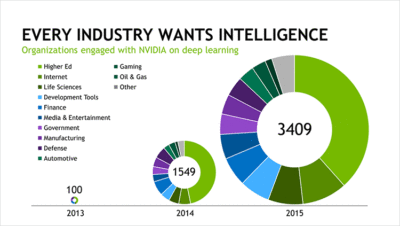
Artificial Intelligence – An overview
What Is Artificial Intelligence (AI)?
Artificial Intelligence (AI) is a process in which combines both science and engineering, to create Intelligent computer programs and machines. As the name suggests, when digital computers execute tasks with human input, it is referred to as AI. It is equivalent to using computers to comprehend human intelligence. One of the most renowned applications of AI is OpenAI’s ChatGPT. Nevertheless, ChatGPT is just a small part of AI that demonstrates how AI technology is helpful and utilized in today’s era. AI finds applications in various industries such as healthcare, finance, edtech, and more. Python, Java, Julia, and R are some of the programming languages commonly associated with AI development, with no other programming languages being interchangeable in AI. This aligns with Wikipedia’s definition.
Artificial intelligence (AI) pertains to the intelligence of machines or software, distinct from human or animal intelligence. It also represents the field of study within computer science that focuses on developing and studying intelligent machines. “AI” may also refer to the machines themselves.
As seen in our featured image, a human hand and a robotic hand collaborate or shake hands together, representing precisely what AI means. They function to perform tasks just as humans do.
Artificial Intelligence encompasses both deep learning and machine learning. Let’s delve into these terms separately.
Deep Learning: Deep learning employs artificial neural networks to interpret data, and it excels in tasks such as image and video analysis, as well as text processing.
Machine Learning (ML): ML is a model that enables computers to execute tasks without explicit programming. It feeds data to the model, enabling it to recognize patterns and make decisions based on the data.

Image Credit: https://www.fool.com/terms/a/artificial-intelligence/
You can gain a better understanding of AI from the images above, which depict Artificial Intelligence in four stages or from four perspectives. It is employed in Machine Learning, Neural Networks, Natural Language Processing, and one of the most popular and useful aspects of today’s era is Robotics.
Skills AI Focuses On
There are some skills that allow AI to perform various types of tasks and applications in different industries, and these are as follows:
Understanding: One of the most important skills of AI is to concentrate on developing algorithms that transform data into actionable information.
Decision-Making: AI must possess skills for making decisions to achieve distinct goals.
Computer Vision: Computer vision skills are important because they enable the interpretation of visual information, including scene and image recognition and the ability to distinguish objects.
Reinforcement Learning: This type of learning skill is also important because it requires the system to make decisions after receiving feedback and rewards for good performance.
NLP: NLP stands for Natural Language Processing, which plays an important role as an AI skill. It learns, generates, and executes human language, enabling tasks like language translation and text analysis.
Different Types Of AI

Artificial Intelligence can be categorized into two types based on Capabilities and Functionality. The capabilities section has three types (Narrow, General & Strong), and the functionality section has 4 types (Reactive Machines, Limited Memory, Theory of Mind, and Self-Awareness).
Based On Capabilities
- Narrow AI: Also known as weak AI, it can perform specific tasks with intelligence. In the world of AI, narrow AI is the most familiar and functional type. Examples include self-driving cars, speech and image recognition, gaming AI, and virtual assistants like Siri (Apple), Google Assistant (Google), Alexa (Amazon Echo), and credit card fraud detection.
- General AI: General AI can perform any task with more efficiency, similar to how humans perform tasks. The main aim of this type of AI is to create a smarter tool and application that thinks and performs tasks as well as humans do. Its focus is to mimic human intelligence.
- Super AI: The main focus of Super AI is to create tools and applications that can perform much better than humans. Although General AI also shares the same focus, Super AI has the ability to think, plan, make decisions, solve problems, and understand things on its own. Its focus is to perform with human-like intelligence.
Based On Functionality
- Reactive Machines: Reactive machines lack the ability to capture past experiences or data that could be utilized for future aspects. Their main aim is to focus on the current situation. An example of reactive machines is Google AlphaGo.
- Limited Memory: Limited Memory is the opposite of reactive machines, as it has the ability to capture past experiences or data, but only for a short time. As the name suggests, limited memory means it can retain memory for a limited time. The best example of limited memory is a self-driving car.
- Theory Of Mind: This AI should be able to interact socially, similar to humans, and understand human emotions and people. Basically, it is constructed as a human-like model to understand the mental state, intentions, knowledge, and emotions of humans.
- Self Awareness: This machine represents the future of AI and is expected to be much better than the human mind.
Uses of AI across Industries?
Artificial Intelligence is being used across various industries to improve the efficiency, decision-making, automate tasks and make new capabilities. Here are some example of how AI is being used in various industries such as: Healthcare, Retail, Finance, Transportation, Education, Manufacturing, Entertainment, Agriculture etc.

Image Credit: https://emerj.com/ai-sector-overviews/artificial-intelligence-industry-an-overview-by-segment/
From the image above, you can get an idea of how extensively and to what extent industries are utilizing AI. The use of AI is increasing annually, as evident in the image.
Let us explore how AI is being applied across different industries and sectors:
Healthcare
Although there are numerous individuals working in the healthcare sector, the increasing workload has prompted the sector to embrace AI. Below are some examples of AI applications in healthcare:
- Diagnosis & Treatment: AI is used to examine medical images, such as MRIs and X-rays. It also aids in drug discovery and provides personalized treatment recommendations.
- Virtual Health Assistants: Virtual assistants and chatbots are employed for tasks like scheduling patient appointments, facilitating interactions, and addressing medical queries.
Education
AI also plays a vital role in education, offering support in personalized learning, administrative tasks, and automated grading. It tailors educational content to individual needs and can swiftly and consistently grade tests and assignments. Additionally, AI-powered chatbots assist in managing administrative inquiries.
Entertainment
Here are some examples of AI in the entertainment sector:
- Content Generation: Content generation is a crucial aspect of the entertainment industry, and AI aids in creating music, art, and even writing stories and articles.
- Content Recommendation: Streaming services effectively utilize AI to suggest music, movies, and other TV shows, enhancing the user experience.
Conclusion
In today’s modern world, AI plays a very important role for every single person and organization. It is utilized in machine learning, robotics, and various other fields globally. AI is created by humans to assist humans, with the aim of making it easier for individuals to understand this complex topic. As you delve deeper into this blog, you will gain a better understanding and learn more about AI.


